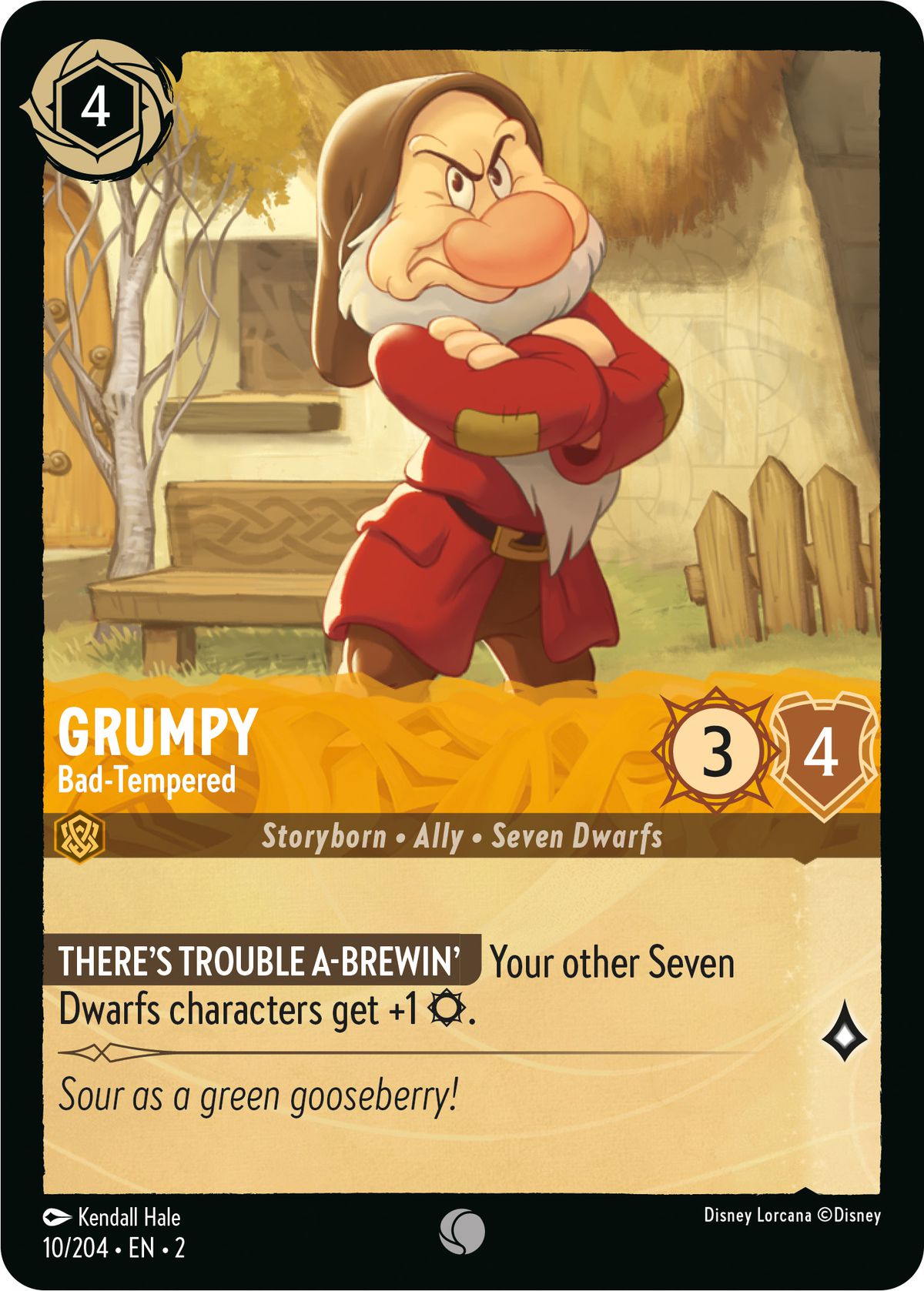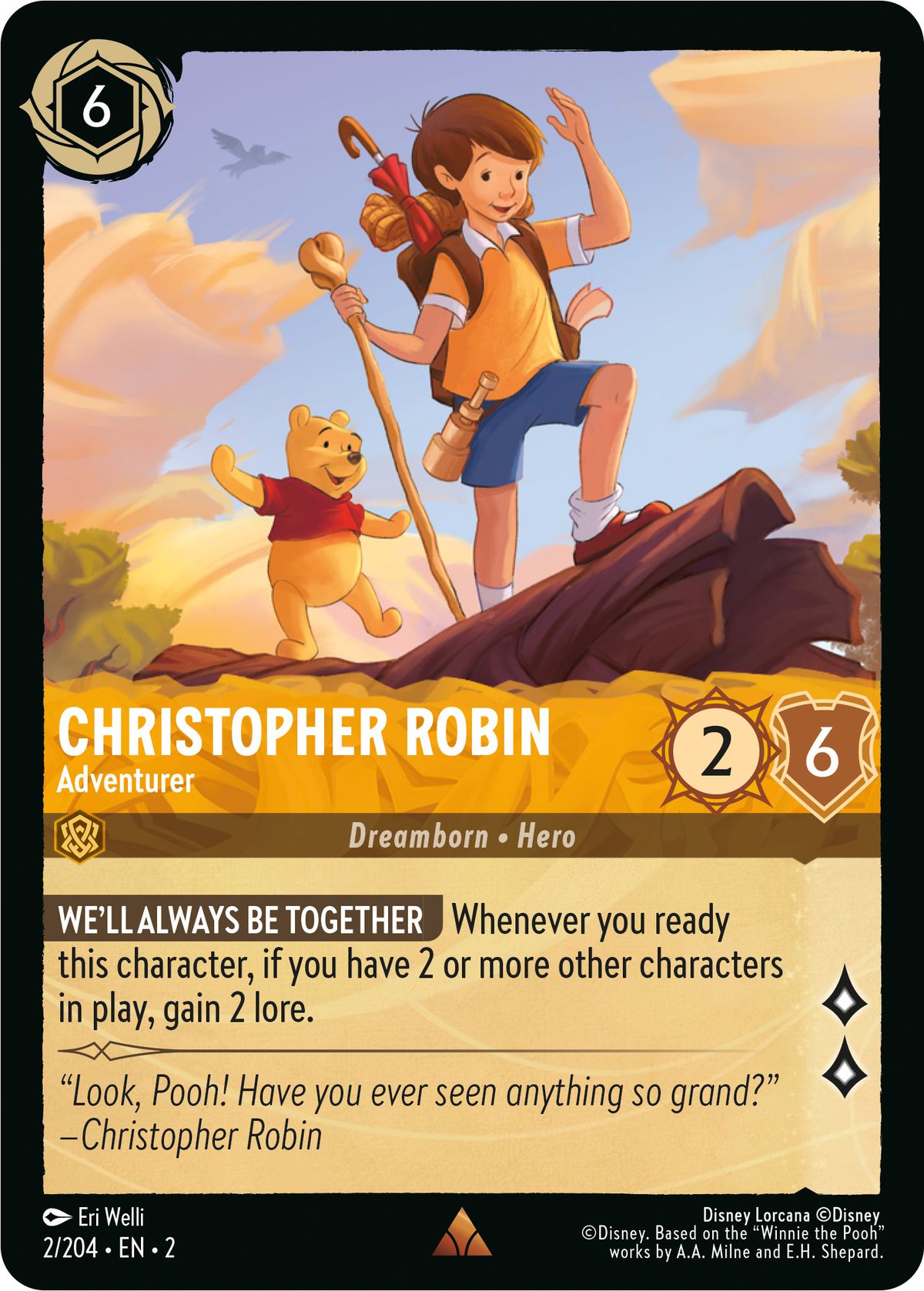Ever since Disney Lorcana launched on Aug. 18, curious friends and family have wasted no breath asking me their most pressing questions: What’s it like? How does it compare to Magic: The Gathering? To the Pokémon Trading Card Game? And why the hell can’t I find any product in stores? It’s complicated, I say. The game is quite good, and compares favorably to both of the leading trading card games on the market. Product is hard to find because, well… people are very eager to try and turn a buck on collectibles these days. Also, spooling up the manufacturing capacity to compete with the two global revenue leaders in all of tabletop gaming is hard. Quite hard, in fact.
But the thing I end up talking about the most in these casual conversations is the fact that there are lots of gaps in the design of Disney Lorcana — holes that very clearly need to be filled in with new cards, new mechanics, even whole new decks to play with. With the release of Rise of the Floodborn, at least some of those holes are beginning to get filled in.
I’ve spent some time with its two new starter decks — both Amethyst and Steel as well as Amber and Sapphire — and they’re every bit the match for the three starter decks that came before. In fact, they fit into the metagame like a key fits into a lock… almost like they’d been designed that way.
My favorite of the two, Amethyst and Steel, is a hefty, brawling thing with a slower ramp-up than my previous favorite, and The First Chapter’s breakout star, Amber and Amethyst. Played right it’s almost as effective, so long as you have enough patience to pad out a few early rounds just dropping ink. But once you get Madam Mim and Merlin cards bouncing back and forth, earning lore left and right, it’s satisfying to then start taking a few big swings with Tiana, Celebrating Princess or Kronk, Junior Chipmunk. Keeping everyone protected with a few sets of Mouse Armor, it’s possible to cruise to a mid-game win nearly unopposed.


On the other hand, my 13-year-old daughter prefers Amber and Sapphire. Also a slow burn, this one’s a team-builder that accelerates surprisingly fast in the mid game thanks to Snow White’s Seven Dwarfs. The Dwarfs vary in cost from two to five ink, but the more of them you get on the table the more powerful they become individually when challenging. It’s a terrific little swarm of charming ruffians, buoyed by none other than Christopher Robin, Adventurer, capable of snagging four lore each round — so long as he has enough friends in play beside him.
Adding these two starter decks to the game, however, does more than just open up two new ways to play. Each 60-card deck in Disney Lorcana must be built from either one or two different colors, and these starter decks are split more or less right down the middle. Amethyst and Steel, for instance, includes 29 Amethyst and 31 Steel cards, respectively. With just a few booster packs — maybe even the ones that come bundled in with each starter deck — you could easily round each of those stacks into two 30-card half decks.
Paired with the other three decks sold at launch in August, those 10 half-decks give you 45 different combinations.
Are all 45 combinations of decks going to be as viable as the five starter decks that the game shipped with across its two launch sets? No. Absolutely not. There are gonna be some real bad matchups in there, to be sure. But until you mash ‘em up together and play them against another deck of cards, you won’t know. And, once you do know, you’ll have a better idea of how to augment those decks to make them better. At its best, the game is intuitive enough that you’ll discover unique maneuvers and combinations at a steady pace. It’s a starting point, and an entrée into the larger world of collecting and building decks for competition.
The bottom line is that Disney Lorcana is growing, just like Magic and Pokémon started growing more than three decades ago. Rise of the Floodborn includes more than 200 new cards in all, effectively doubling the number of cards available with which to build and play. It’s a great game, and its complexity is building at a speed that even its youngest fans can keep up with — and, at $16.99 a starter deck, at a price that many people can afford.
Just don’t you dare pay a penny more than $16.99 (plus taxes) for those starter decks.
Grab a deck or two, maybe all five starters if you can find them with the reprint launching around the same time, and get started learning the game. Quit worrying about the outlandish prices being paid for shiny, sexy cards online. Stop confusing these things for bitcoin. It’s a card game, one with a massive fandom and a healthy momentum behind it. It’s going to be a long journey, one that gets even better as it rolls along.
Disney Lorcana Rise of the Floodborn’s two new starter decks arrive at local retailers on Nov. 17, with a wider release on Dec. 1. They were reviewed using pre-release physical copies provided by Ravensburger. Vox Media has affiliate partnerships. These do not influence editorial content, though Vox Media may earn commissions for products purchased via affiliate links. You can find additional information about Polygon’s ethics policy here.
- SEO Powered Content & PR Distribution. Get Amplified Today.
- PlatoData.Network Vertical Generative Ai. Empower Yourself. Access Here.
- PlatoAiStream. Web3 Intelligence. Knowledge Amplified. Access Here.
- PlatoESG. Carbon, CleanTech, Energy, Environment, Solar, Waste Management. Access Here.
- PlatoHealth. Biotech and Clinical Trials Intelligence. Access Here.
- Source: https://www.polygon.com/23955587/rise-of-the-floodborn-starter-decks



